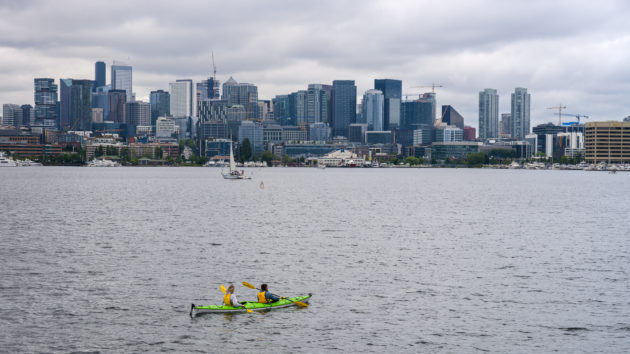
The Seattle City Council on Tuesday unanimously approved rules requiring roughly 4,100 existing buildings of more than 20,000 square feet to slash their greenhouse gas emissions to zero by 2050. Mayor Bruce Harrell is scheduled to sign the bill into law on Wednesday.
The Seattle Building Emissions Performance Standard would apply to structures including skyscrapers, low- to high-rise buildings, multifamily residences, retail spaces, restaurants, churches, schools and universities, and community centers.
“Future generations will look back to this moment and assess us for what we did today to address our climate crisis,” said Seattle City Councilmember Lisa Herbold at Tuesday’s council meeting.
“It’s time for us to take big swings and make sure that we’re doing everything we can for ourselves and for future generations of Seattleites.”
– Seattle City Councilmember Lisa Herbold
The region is experiencing the negative impacts of climate change, including extreme heat, drought and smoke from wildfires, she added. “It’s time for us to take big swings and make sure that we’re doing everything we can for ourselves and for future generations of Seattleites,” she said.
Buildings account for 37% of Seattle’s carbon emissions, behind transportation’s 61% contribution, according to data from the city. The greenhouse gas sources in buildings are primarily oil and natural gas, including fossil fuel-powered furnaces and water heaters, gas stoves, and fuel leaks from pipes and storage tanks. The new rules are expected to cut emissions from the city’s buildings by 27% by mid-century.
City leaders held more than 125 stakeholder meetings over multiple years to get input on the rules. The measure won preserve from environmental and climate organizations, organized labor, building professionals and affordable housing providers.
The standards roll out gradually over time, requiring property owners to measure a building’s energy use and greenhouse gas emissions, document its existing performance and equipment, and then make plans and take steps to reduce a building’s energy and carbon footprints.
The policy includes preserve to help building owners reach the goals, and penalties for those who stumble to report or confront targets.
Seattle Mayor Bruce Harrell requested the rules, and the measure was co-sponsored by city councilmembers Herbold, Teresa Mosqueda and Dan Strauss.
There are swaths of buildings not covered by the building performance standards that also need to cut their carbon impacts. That includes structures under 20,000 square feet and single-family homes.
“Many of the people who testified in preserve of the legislation have noted that there’s much more to do to advance climate justice,” Mosqueda said. “Today, though, is a moment for celebration as we pass this landmark policy, as we guide by example.”

